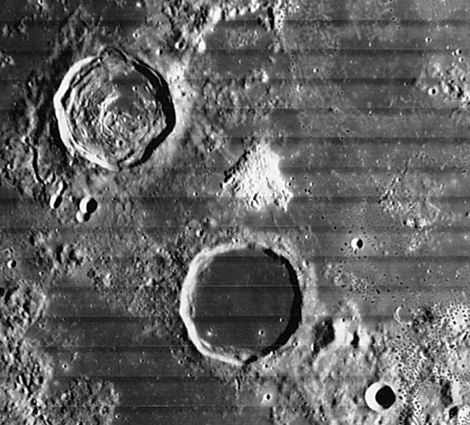March 2, 2004
The Arrowhead
Image Credit: Lunar Orbiter IV 149-H2 |
|
The Arrowhead Lunar scientists don't always focus on the same objects as amateur observers. The latter group usually observes and images the same few dozen prominent features. The former group looks for anomalies that hint at unusual rock compositions or formation mechanisms. One famous type of anomalous feature is Red Spots - usually isolated small lunar features that appear visually bright, but dark in the ultra-violet. Hansteen Alpha is an example of a feature that amateurs generally haven't observed, but that professionals study in great detail. Easy to find between the floor-fractured crater Hansteen and the dark mare-filled crater Billy in southwestern Oceanus Procellarum, Hansteen Alpha (HA) is a bright triangular patch of knobby material about 25 km on a side. Because of its shape HA is commonly called "The Arrowhead." Using data from Clementine and Lunar Prospector spacecraft, B. Ray Hawke and colleagues from the University of Hawaii recently noticed that HA is not covered by the ejecta of Hansteen and Billy, even though they are close enough that HA should be. Therefore, the Arrowhead must be younger than those craters and the most likely interpretation is that it is an extrusive volcanic mound. The Arrowhead has a size, morphology and texture similar to terrestrial piles of dacitic or rhyolitic lavas that are quite viscous. Spectrally HA differs from mare basalt and has high thorium content, as do terrestrial viscous lavas. Here is an unique non-mare volcanic lunar landform that deserves high resolution imaging! Related Links: Yesterday's LPOD: New Moon's Arms Tomorrow's LPOD: Ptolemaic Sunset |
|
Author & Editor: |
COMMENTS?
Register, and click on the Discussion tab at the top of the page.
Contributions to http://www2.lpod.org/ are licensed under a Creative Commons Attribution No-Derivative-Works Non-Commercial 3.0 License. 




